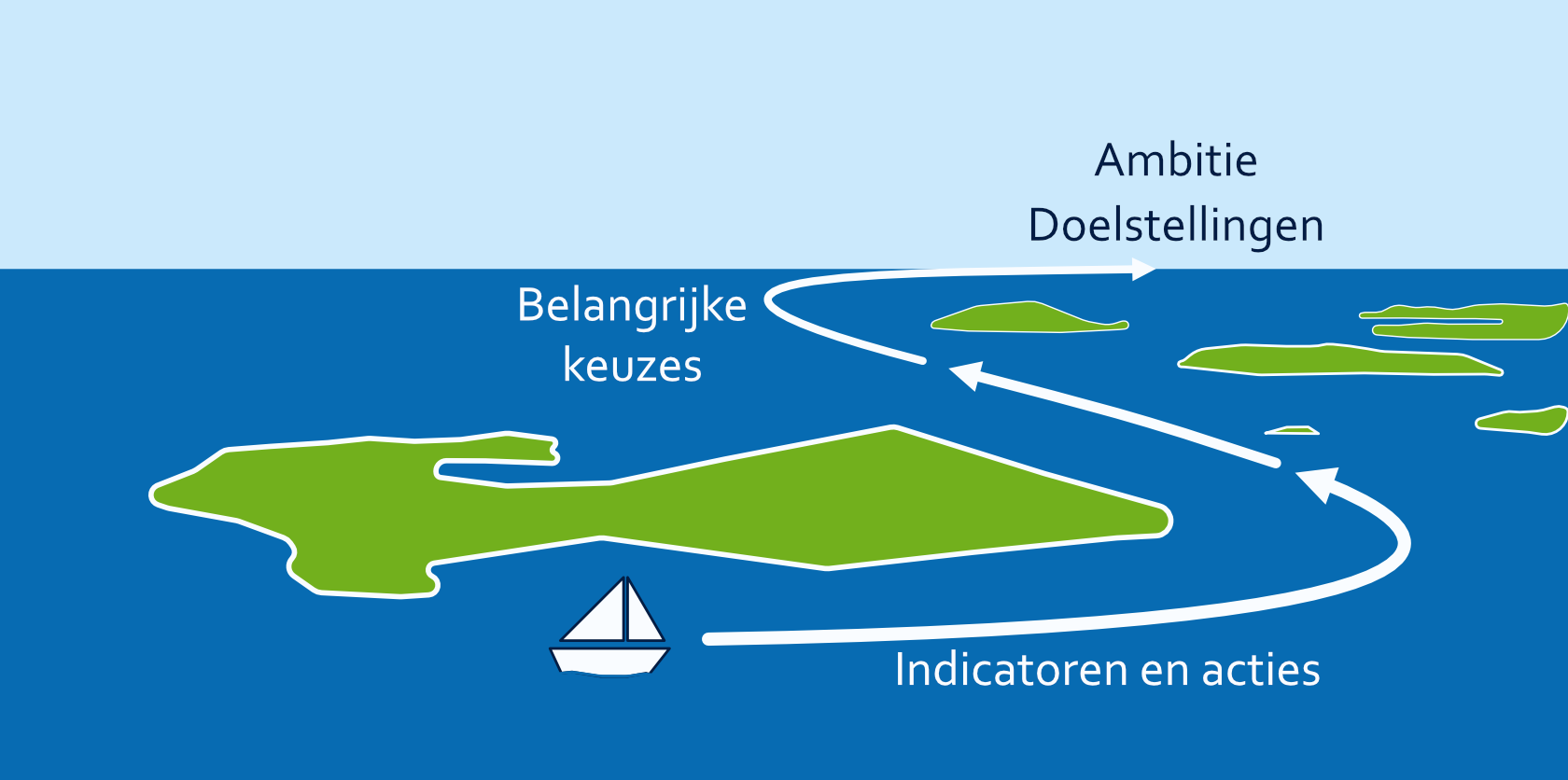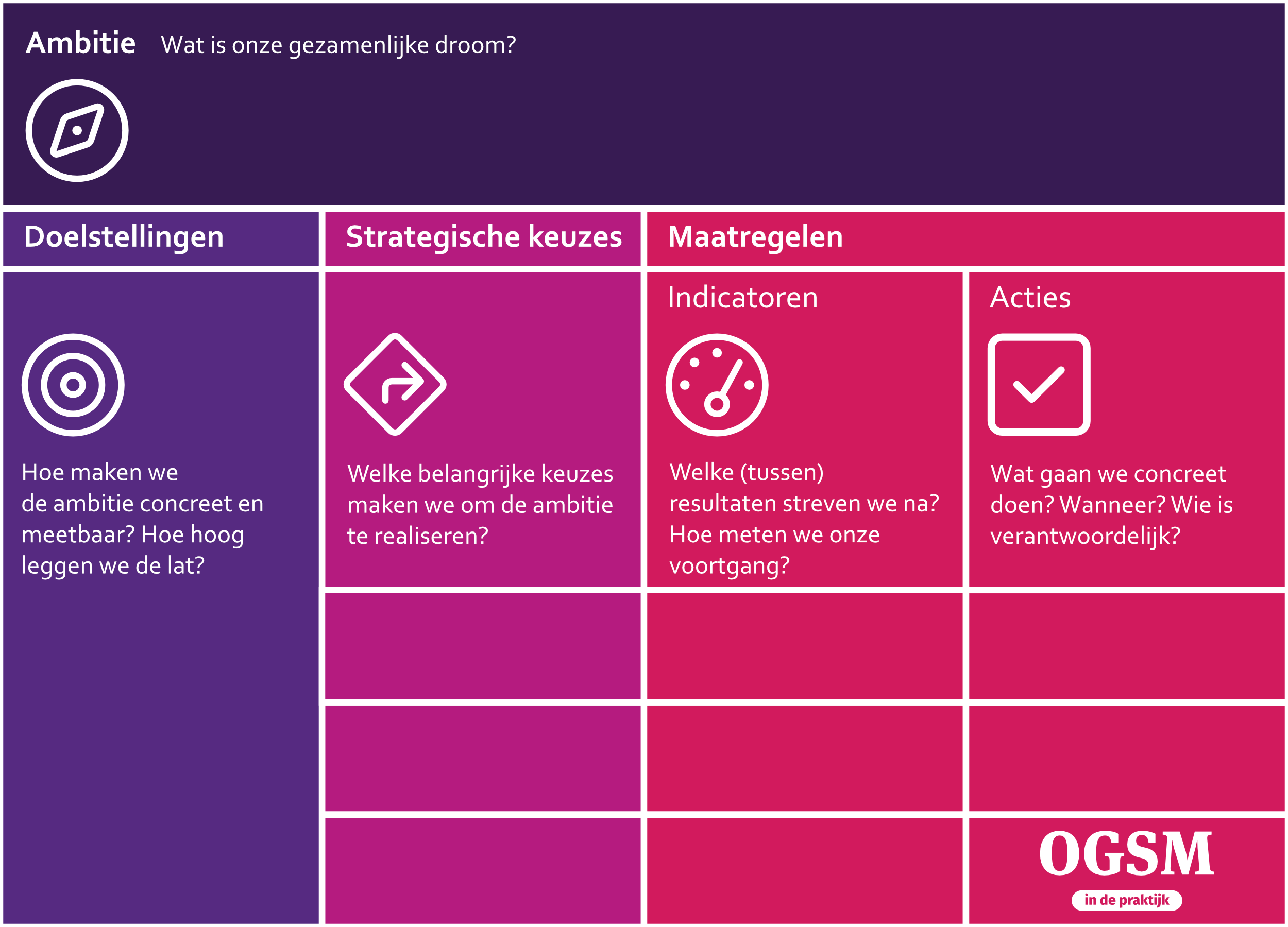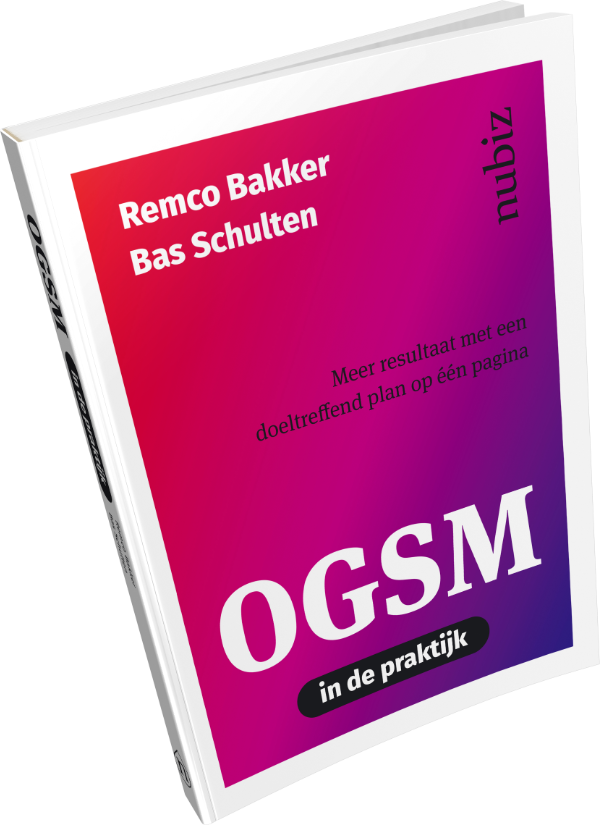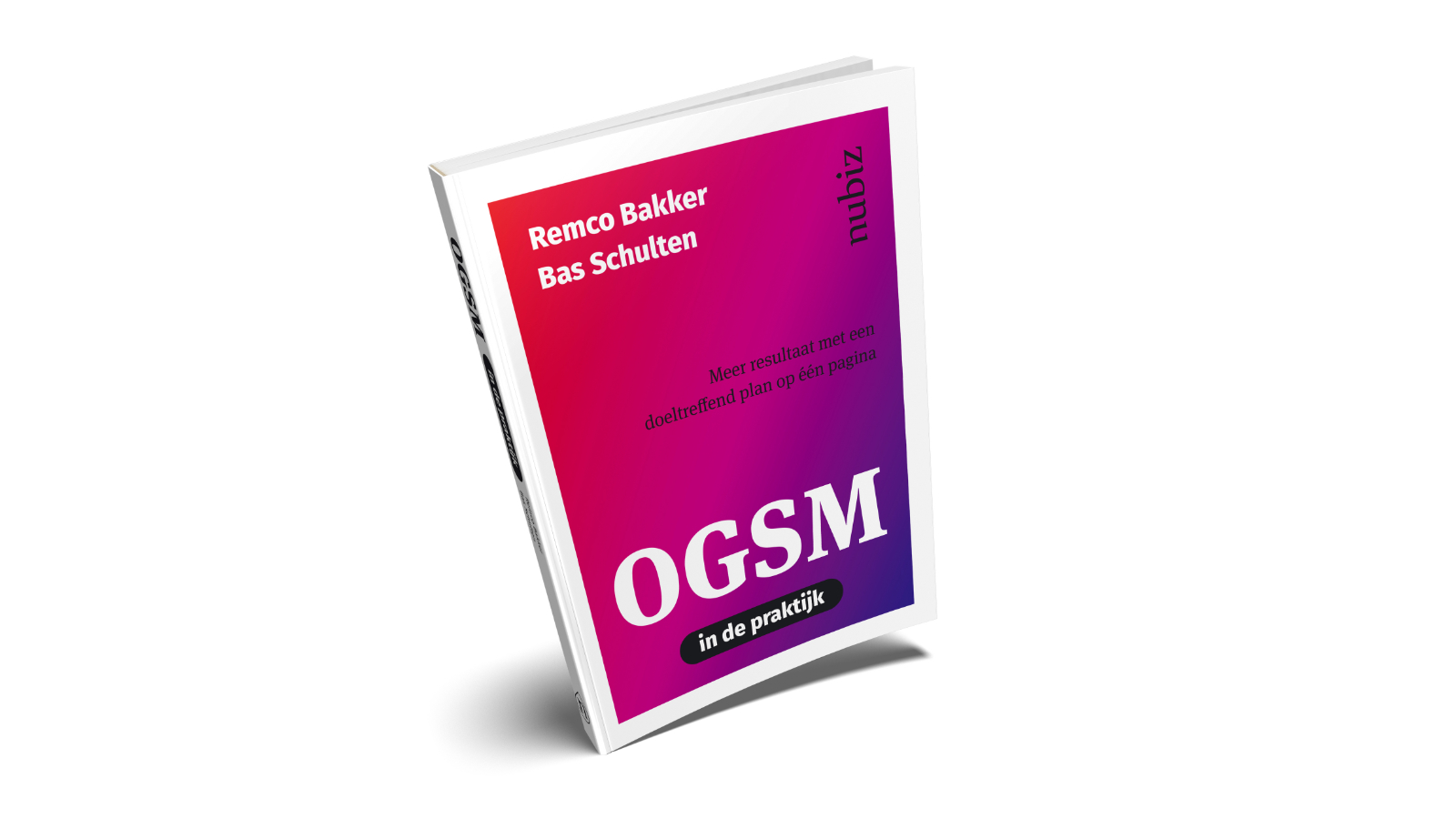Such a plan helps, because you are well prepared for the trip. You think about the destination and the desired route. In the implementation you can then simply get started with the actions that are in your plan. You won't do what you can't do. But every plan is a living plan. During the implementation you gain new insights, you learn from the results. You should therefore regularly evaluate and adjust your plan. This way you stay on track and remain agile.

Parts of a good plan
A good plan consists of four parts.
- First the objective, the final destination. This inspires you to travel.
- But what exactly do you mean by objective? With the goals make the objective concrete and measurable. They form a checklist to determine whether the objective has been achieved.
- The essence of a good plan is: making choices. The important choices in the plan determine the direction, the course that you map out.
- De indicators and actions describe how you monitor progress along the way and what you will do in concrete terms. Each action (ultimately) contributes to the realization of the objective and goals.
OGSM: a plan in one overview
The components of a good plan can be summarized using the OGSM model. OGSM is a powerful model for making plans. The plan is clear and provides energy to get started. You see clearly why you are doing it: realizing your objective. An OGSM is a plan in a handy format that forces you to limit yourself to the essentials. You have to choose what is really important. And OGSM provides a logical structure for your plan. All elements are interrelated and reinforce each other.

Op ogsmindepraktijk.nl you can download a detailed OGSM. The OGSM is the plan for a sailing trip across the ocean.
The plan of a team
In most cases, more people are involved in a plan. The plan is from a team. It is then important to regularly discuss progress with each other, so that you stay on the same page. You then answer the following questions together:
- Are we doing things right? What can we do smarter or better?
- Are we doing the right things? Is our effort paying off or do we need to change our plan?
The skipper and the team members
In a team you have to make clear agreements about the division of roles when drawing up and executing the plan. Who is responsible for what? What do you expect from each other? And what powers does everyone have? This encourages ownership and taking responsibility. It creates clarity within the team and ensures that things don't get left behind (“Oh, I thought you would.”).
The plans of an organization
In an organization it often becomes even more complex. As a team you are part of a fleet. In that fleet, each ship, so each team, has its own role. The challenge is to align all those teams so that they reinforce each other. Concretely this means:
- All teams must contribute to the big goal: realizing the objective.
- All teams work optimally together. The content is aligned, the dependencies and the planning are coordinated.
Book layout
The book is divided into seven chapters. In the introduction we will discuss the power of a good plan. This article is a summary of that. In chapter 2 we discuss the OGSM model as a structure for such a good plan. In chapter 3 we describe the steps you need to take to create an OGSM, together with a team.
And then it really starts. You will only achieve results if you start working with the plan. In chapter 4 we therefore introduce a clear method for discussing the progress of your OGSM as a team and adjusting your plan.
In chapter 5 we discuss the division of roles and responsibilities within teams that work with OGSM and the way in which you come to good decisions together.
In chapter 6 we zoom in on organizations where multiple teams work together. We show how to create and maintain cohesion between multiple OGSMs.
The final chapter is about assessing the team's performance and creating personal development plans with OGSM.
OGSM in practice
This article is a summary of a chapter of the book 'OGSM in practice'. More information can be found at ogsmindepraktijk.nl
Or order the book directly from management book of bol.com.
Stay Informed
Register for the newsletter “OGSM in practice” and receive monthly new inspiration about working with OGSM.



